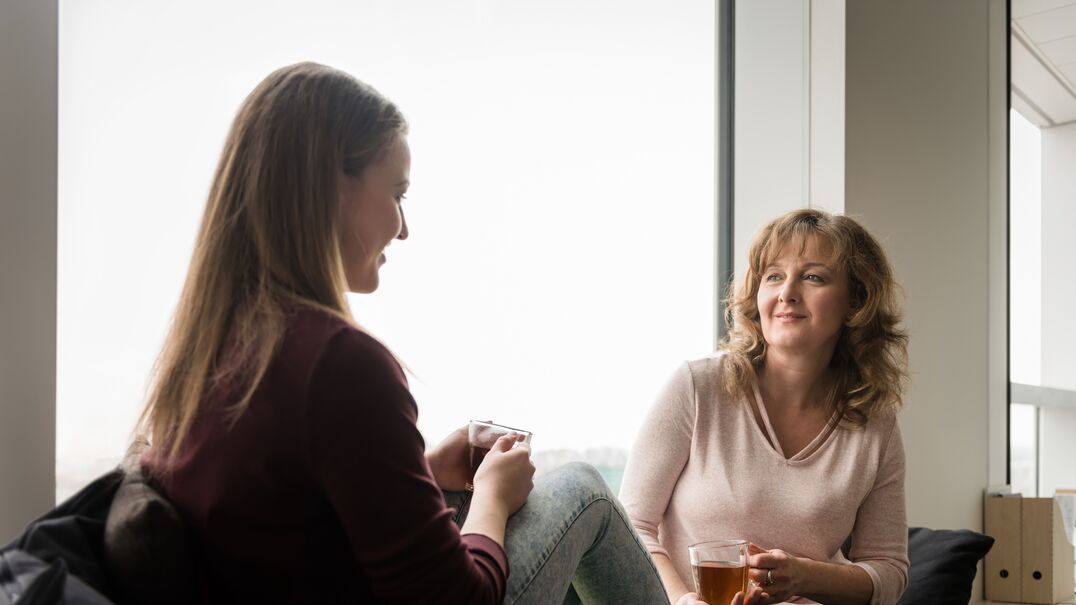Uncomfortable Truth #1:
Child abuse and neglect are not rare occurrences. They are widespread problems affecting children right across Australia.
It's incredibly prevalent, but I also think it's quite hidden from the general community. But I think that if the average person knew how prevalent child abuse and neglect was, they would be really shocked by what we're seeing.
This is a stark reminder of the hidden epidemic of child abuse and neglect that exists within our community. The consequences of these experiences can be far-reaching, impacting not only the individual but our whole society.
Recently, the Australian Child Maltreatment Study uncovered the shocking numbers about how many people experience childhood maltreatment.
Among all Australians aged 16 to 65 years and older:
- more than 1 in 4 have experienced sexual abuse (2)
- almost 1 in 3 have experienced emotional abuse (2)
- 2 in 5 have experienced exposure to domestic violence (2)
- 1 in 4 Australians experienced 3-5 different types of maltreatment (2)
Uncomfortable truth #2:
A significant number of Australian children experience severe physical abuse resulting in serious injuries.
We know that 1 in 3 children (2) experience physical abuse. And we're not just talking about a small little act that might be when your child is running across the road that you grab their arm. We're talking about physical abuse that causes non-accidental injuries, like broken bones.
This statistic, taken from the Australian Child Maltreatment Study, is alarming and shines a spotlight on just how common physical abuse is in Australia. The one in three statistic means millions of Australian children are experiencing physical harm.
And these are not little acts. According to the Study, physical abuse “involves the use of physical force by a parent or caregiver against a child that causes injury, harm, pain, or breach of dignity… acts of physical abuse include hitting, punching, kicking, shaking, choking, and burning” 2. This type of abuse can have lasting consequences such as chronic pain, disability, and in some heartbreaking cases, even death.
A study from the University of Sydney's Matilda Centre has established how much Australia's mental health crisis can be traced back to this negative kind of childhood experience. The research found that childhood maltreatment is responsible for up to 40 per cent (2) of common mental health conditions including anxiety, depression, substance abuse, self-harm and suicide attempts.
It found if child maltreatment was eradicated it could avert more than 1.8 million (2) cases of depression, anxiety and substance use disorders. The researchers called for child abuse and neglect to be treated as a national public health priority.
Additionally, the Australian Child Maltreatment Study found maltreatment can negatively impact a person's education, relationships, and employment, leading to challenges that require increased government support such as financial hardship, unemployment, and homelessness.
Uncomfortable truth #3:
There is an urgent need in Australia for community-wide efforts to provide safety and wellbeing for children.
We know that in an average classroom 1 in 32 children (3) are reported to child protection services… That's one kid in every class. That's an image that I think should remind us that all of us have to work together within our classroom and greater communities, because the frequency of one child in every class, that's far more children and young people in child protection services than we ever, ever want to see.
That’s 180,000 Australian children (3) who required child protection involvement during 2022-23, many of whom who were unable to live at home due to child safety concerns. And the number is rising.
We know that by the time a child cannot live safely with their family, then that family is often facing multiple and substantial challenges. But what if families could be supported earlier when problems first started to appear?
According to a report prepared for the Victorian Department of Treasury & Finance, the “benefits of effective early intervention are significant” Rose, V., Mildon, R. & Hateley-Browne, J. (2022). They include improvements to social cohesion due to less crime and improved safety, economic benefits through improved employment that increases individuals earning capacity, and direct benefits to the services that support people through lower demand leading to more effective use of available resources.
By providing targeted early intervention support to families who at risk, we not only help individual children and young people but also contribute to a larger societal shift towards prevention.
Early intervention in action
Here are two Berry Street early intervention programs showing remarkable results:
SafeCare is an evidence-based, early intervention program that supports parents with children aged zero to five years, to build parents' positive interactions with their children and improve safety and the health of the child.
Multisystemic Therapy (MST) is a holistic, therapeutic intervention where teams of four highly trained therapists work intensively with a family for up to six months at a time. They support young people, aged 10 to 17 years, to keep living safely at home and avoid entering out-of-home care, engage with school and stay out of the justice system.
Even with the best early intervention efforts, some children may still be unable to live with their families. That’s why Berry Street continues to recruit foster carers (and provide innovative residential care solutions like the Teaching Family Model.
Berry Street is working tirelessly to end this crisis of child abuse and neglect. Listen to the Stories from Berry Street podcast to meet the experts tackling these challenges head-on and find out more about the innovative solutions being used to keep children and families safe.
Sources:
1. https://www.acms.au/findings/#
2. https://www.sydney.edu.au/news...
3. https://www.aihw.gov.au/report...
4. Rose, V., Mildon, R. & Hateley-Browne, J. (2022). What early intervention looks like across the service system. Paper 1 prepared for the Victorian Department of Treasury & Finance. Centre for Evidence and Implementation.



